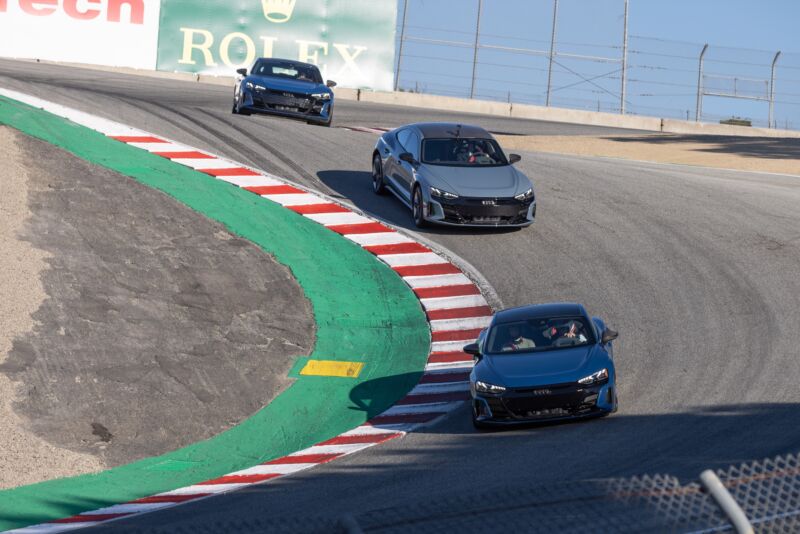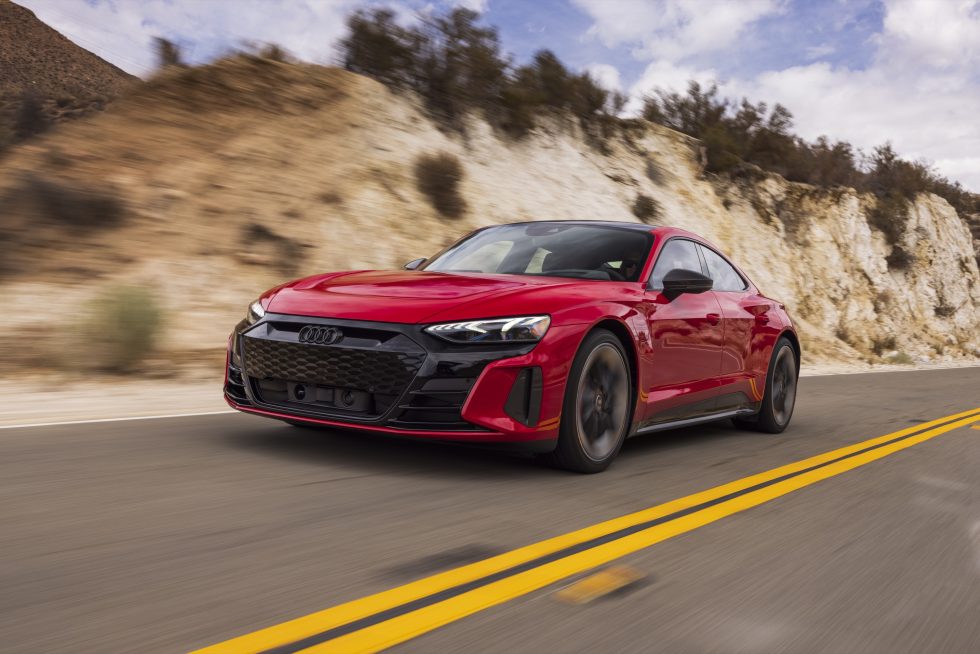
Enlarge / Danish racing driver Tom Kristensen leads another pair of Audi RS e-tron GTs through the corkscrew corner at Laguna Seca. (credit: Audi)
Call it platform sharing, call it badge engineering, call it what you like—car companies have collaborated with each other to make cars for much of the automobile's history. Sometimes these link-ups happen between companies that might normally be considered rivals: Honda and Rover in the 1980s; the BMW/Toyota project that gave us the new Supra; or perhaps the forthcoming electric vehicle platform-sharing between Ford and Volkswagen or General Motors and Honda.
More often, it occurs among the shared brands of a single OEM—Chrysler Group's K platform in the 1980s is a good example. But few automakers have exploited the advantages of that quite like Volkswagen Group, which builds hundreds of different vehicles across its 10 brands around the world using just a handful of different platforms. The vast majority of these—and we're talking several million cars a year—are built on VW Group's MQB platform, which can give rise to anything from an Audi A3 to a Volkswagen Transporter van, with cars and crossovers and SUVs of most sizes and shapes.
But even as you go up the price scale, this practice is still widely used. For example, for decades Bentleys were basically Rolls-Royces with a slightly different nose; today, they share platforms with Porsche's Panamera and Cayenne. And it's why the handsome four-door EV in this review wears Audi RS e-tron GT badging yet features very Porsche Taycan-like specifications—a consequence of sharing the same J1 platform.

No comments:
Post a Comment